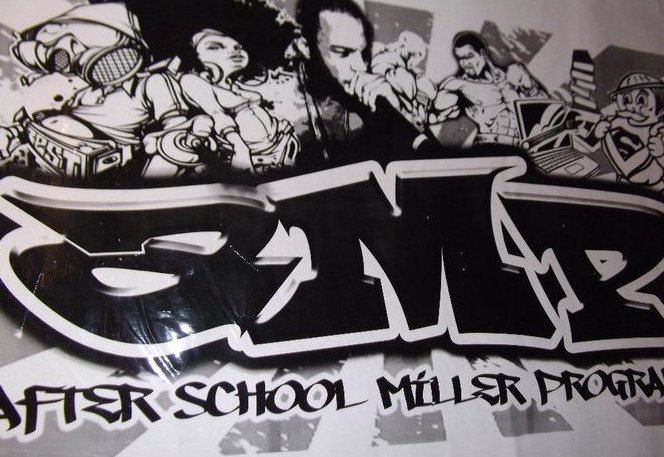Springfield High School: Using Student Voice to Create Programming that Engages All Students

Due to the leadership team’s hard work, SHS was awarded a five-year grant to start the Afterschool Miller Program to give students a safe place to learn and explore their interests after school.
The Challenge
In 2005, Springfield High School (SHS) received frequent complaints about some of their students’ behavioral issues (e.g. fighting). As leadership at SHS worked together to come up with a solution, they identified two major factors that they believed were contributing to the problem:
- At the end of the school day, students had to leave campus due to a lack of staff supervision, putting kids on the streets when most juvenile crime takes place (3 to 6 p.m.).
- SHS needed to figure out how to better serve their students of color, many of whom did not feel connected to what they were learning at school (dropout rates were above 10% for students of color—more than twice the rate of white students).
Staff knew that something had to be done to help students, and one proposed solution was to keep students safe on campus where they could interact with caring adults. To create an after school program that really worked, activities would need to be meaningful and engaging to all of the students: kids from different racial, ethnic, and linguistic backgrounds, with different abilities, interests, and social groups.
Carmen Gelman (then assistant principal at SHS) convened a team and determined that one of the main problems with engaging students was that the students had no voice in programming. Gelman went straight to the students to ask what they were interested in participating in.
Students had lots of ideas! Dance, music, boxing, visual arts, electric cars, gaming, video design, anime, tutoring, graffiti, and many others. Both staff and students got excited about the diversity of the activities and how they directly tied into what students were learning throughout the day. This information was the guide SHS used to design their after-school program and apply for a grant to fund it.
The Afterschool Miller Program (AMP)
Due to the leadership team’s hard work, SHS was awarded a five-year grant to start the Afterschool Miller Program to give students a safe place to learn and explore their interests after school. Once they received the grant, the SHS leadership had to get creative to teach the different activities that students were interested in and identify community members and resources that could support programs, such as a local boxing coach.
In addition to providing programs for students, the AMP included opportunities for parents to come to campus and become more involved in the school. The local community college agreed to offer GED classes taught in Spanish on the campus for parents, while SHS provided all the materials, paid for the exams, and offered childcare. The first class only had seven parents, but by the third class, there were over 30. Many parents chose to enroll in the community college, which not only afforded them more opportunities personally but also prepared them to talk to their student about postsecondary education.
The program also offered a support group called “in between two worlds” where students and parents could come together to talk about what it feels like to navigate both the world that many of them live in at school and the cultural expectations from home, and how they don’t always align.
The Afterschool Miller Program has many options for students:
Music Recording Studio: Students learn songwriting, basic music theory, digital audio engineering, beat production and studio management.
Urban Arts: Students design and create murals, T-shirts, CD covers, posters, and other products using airbrush, silkscreen, spray paint, and other tools.
Video Production: Students use video cameras and iMovie to make music videos.
Boxing Training and Techniques: Students learn the Martial Art of Olympic Boxing in a fully-equipped boxing training gym.
Computer Repair and Refurbishing: Students gain marketable skills in computer repair and refurbishing.
Millerz in da Mix: MIDM is Springfield High School’s hip-hop dance team.
Tutoring and Homework Help: Students may work with bilingual (English and Spanish) tutors in the library.
The Impact
The program created a new way for students to get involved in other subjects. Students can now start projects in their classrooms and are then able to continue their work after school where adults are available to help them. The music studio drew a large number of students, and teachers began to identify ways to use the studio to engage students in their classes. Some language arts teachers even worked in collaboration with the music studio instructor to support students in writing music, raps, poetry and lyrics for their writing assignments.
Parents feel valued because SHS offers programs that made them feel honored and respected while giving them opportunities to learn and grow. Teachers appreciate the additional resources and the opportunity to use creative ways to get students motivated. Further, it addresses the two major issues the SHS leadership had identified as reasons they were receiving frequent complaints:
- Students at SHS now have a safe place to be until 6:00 p.m.
- Students are connected to their learning because their ideas were incorporated into the design of the Afterschool Miller Program. This not only gave them opportunities to participate in what they were really interested in but it gave them a recognition that what they had to say to SHS staff was valued and came to fruition.
I’ve seen kids respond to it in a way that helps them do better…increased self esteem, increased attendance, increased grades…they find friendships where they didn’t have any before.
Carmen Gelman
Since bringing the AMP to the Springfield High School community:
- The number of graduates transitioning to postsecondary doubled
- Suspensions went from 400 per year to 147 per year
- There was 6% increase in attendance in one semester
Overall, the after-school program helped to start transforming the culture of the campus at Springfield High School. Students were provided with meals, activities that they normally would not be able to participate in, and a safe place to be. Through the grant, Springfield was able to purchase materials, technology, and other supplies that gave students resources that were historically never in place. Attendance is up, student engagement has increased, and a new sense of family at school is very evident.






Responses